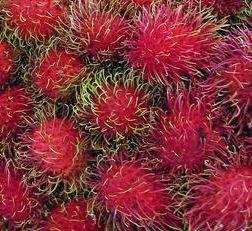
Costa Rica has the potential to increase exports of exotic fruits to Canada by targeting ethnic consumers, according to a new study by trade promotion agency Procomer.
Products such as papaya and rambutan made up 0.1 per cent of Costa Rica’s total fresh fruit exports in 2017, after falling by an average of 4 per cent a year since 2013.
Canada was the leading destination, accounting for 40 per cent of shipments, followed by Spain with 16 per cent and the US with 12 per cent.
According to the study, ethnic consumers living in Canada mainly consider the appearance, price, quality and colour of the fruit, so freshness and a competitive price are essential when it comes to targeting this market.
In addition, if the consumer does not know how to consume the product or see a colour outside of what they consider normal they prefer not to buy it, which makes it vital to have promotion strategies focused on providing information on the use, preparation, and nutritional properties of exotic fruits.
Procomer’s Marta Esquivel said Costa Rica needed to recover the export volumes of papaya and rambutan that it had in Canada in order to take advantage of the opportunities offered by this market.
The consumption of exotic fruits is rooted in the Asian immigrant population and, to a lesser extent a small Latin community. They buy the fruit mainly in low-priced ethnic supermarkets, although conventional supermarkets are increasingly boosting their exotics offer in order to attract new customers.
According to projections, ethnic buyers will account for 31 per cent of total consumers in Canada by 2031. At the same time, moves by Canadian consumers towards a healthier diet are stimulating demand for fruits with a high nutritional content.
Research by Nielsen shows that retail sales of ethnic foods in Canada reached US$3.8bn in 2017.



